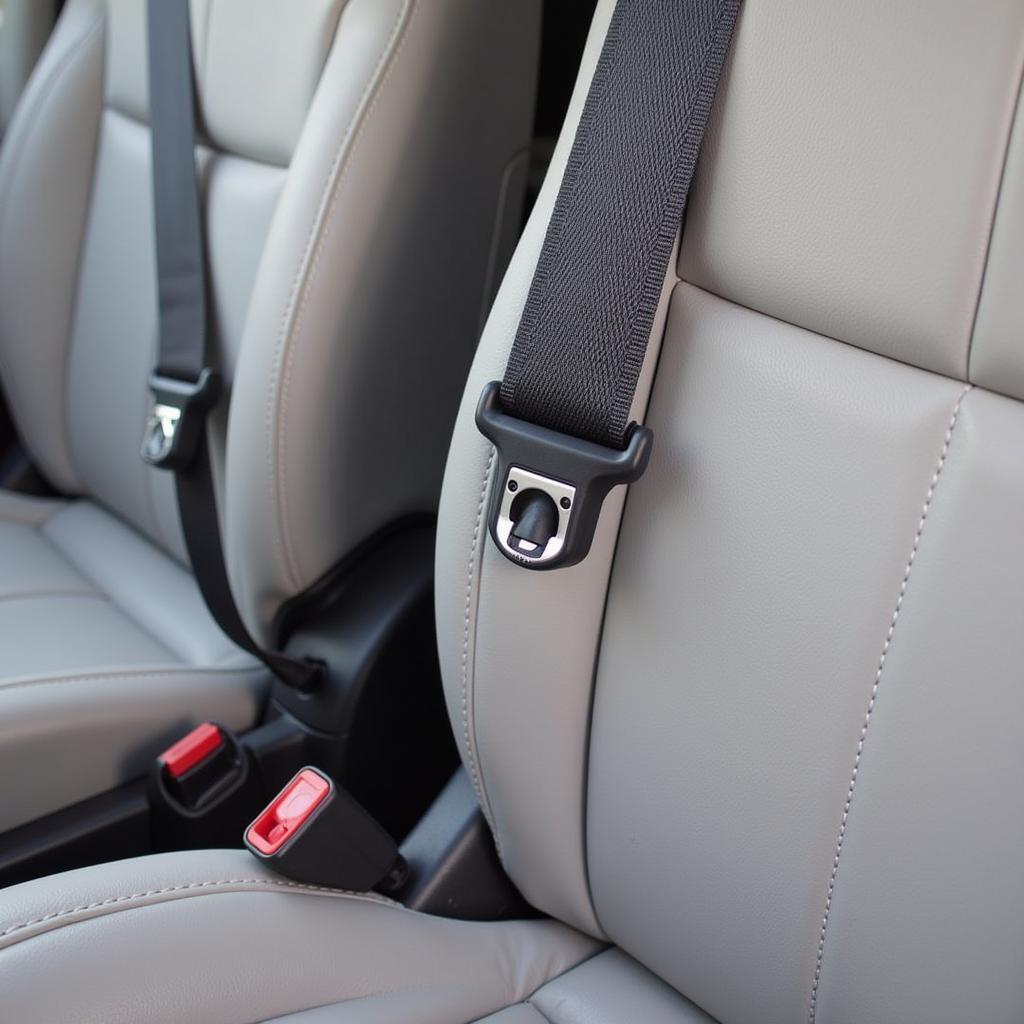Replacing a faulty brake warning chime on your 2006 Toyota Highlander might sound like a daunting task, but it’s actually quite manageable for even the average DIY enthusiast. This guide will walk you through the entire process step by step, ensuring a smooth and successful replacement.
Understanding the Brake Warning Chime
The brake warning chime, a vital safety component, alerts you to crucial issues like an open driver’s door or a malfunctioning parking brake. When this chime stops working, it becomes a significant safety concern, as you might miss crucial warnings. Thankfully, replacing it is a relatively straightforward process, and the parts are readily available.
Tools and Materials You’ll Need
Before diving into the replacement process, gather the necessary tools and materials:
- New Brake Warning Chime: Ensure you purchase a genuine Toyota part or a compatible aftermarket alternative.
- Torx Screwdriver: A T20 or T25 size will typically be needed.
- Phillips Screwdriver: You may need this for removing the dashboard panel.
- Wire Strippers and Crimping Tool: For working with electrical wires if needed.
- Patience and a Positive Attitude: This DIY project can be tackled by anyone, even if you’re not a seasoned mechanic.
Step-by-Step Guide to Replacing the Brake Warning Chime
Follow these steps to replace the faulty brake warning chime in your 2006 Toyota Highlander:
- Disconnect the Battery: As a safety precaution, disconnect the negative terminal from the car battery to prevent accidental electrical shocks.
- Remove the Dashboard Panel: Carefully remove the dashboard panel around the steering wheel using the appropriate screwdriver. This might involve loosening clips and fasteners.
- Locate the Brake Warning Chime: The brake warning chime is usually located behind the dashboard panel, near the steering column. It’s a small, cylindrical device with electrical wires connected to it.
- Disconnect the Wires: Carefully disconnect the electrical wires from the old brake warning chime, noting their positions. Take a picture if needed.
- Install the New Chime: Install the new brake warning chime in the same location, making sure the wires are securely connected in the same position as before.
- Test the Chime: Reconnect the battery terminal, and test the new brake warning chime by opening the driver’s door or engaging the parking brake. The chime should sound, indicating a successful installation.
- Reassemble the Dashboard Panel: Carefully reattach the dashboard panel, ensuring all clips and fasteners are securely fastened.
Expert Insights:
“It’s crucial to ensure that the replacement chime is compatible with your specific vehicle model. If you’re unsure, consult your Toyota dealer or a qualified mechanic,” advises John Miller, a certified automotive technician with over 20 years of experience.
“When working with electrical components, it’s best to wear gloves to avoid accidental shocks. And always be mindful of the electrical wiring and connections,” emphasizes Sarah Thompson, an experienced automotive electrical specialist.
FAQ:
Q: Can I use a generic brake warning chime on my Highlander?
A: While generic chimes are available, it’s recommended to use a Toyota-specific chime for the best compatibility and performance.
Q: What happens if the chime still doesn’t work after replacement?
A: If the problem persists, there might be other underlying issues. Contact a qualified mechanic for further diagnosis and repair.
Q: Is there a way to test the chime before installing it?
A: While it’s not always possible, some aftermarket chimes might come with a test feature that allows you to verify their functionality before installation.
Q: Can I replace the chime myself, or should I take it to a mechanic?
A: The replacement process is relatively straightforward, but if you’re not comfortable working with electrical components, it’s always advisable to consult a qualified mechanic.
Conclusion
Replacing the brake warning chime on your 2006 Toyota Highlander is a simple DIY project that can save you time and money. By following these steps and taking necessary safety precautions, you can ensure your vehicle’s safety systems are in top working order. Remember, a functioning brake warning chime is crucial for your safety on the road.

